
Perched on high of the pure caves, the group of 4 posed for the necessary selfie. Minutes in the past, they’d walked previous the yellow ‘No Selfie Zone’ signage at Querim seashore in North Goa and headed in direction of the rocky space. Simply then, a wave knocked them down and pulled them into the ocean. All 4 – three of them minors — drowned.
With an formidable goal of curbing such incidents and bringing seashore deaths all the way down to zero, Goa is rolling out new initiatives and bolstering previous ones – from a squad of educated canine to help lifeguards in rescue operations to using “synthetic intelligence” for surveillance and knowledge sharing to reviving consciousness programmes.
However there are challenges – individuals jeopardizing their security for the right selfie, swimming drunk, or venturing into areas clearly marked unsafe.
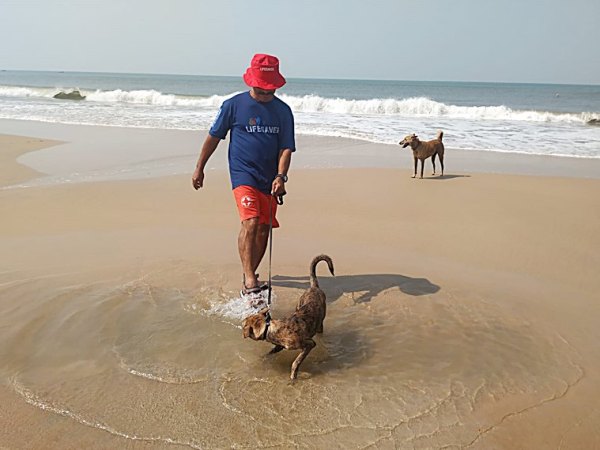 As soon as educated, the canine squad will likely be deployed on high-density seashores with probably the most footfall, and subsequently on much less crowded ones. (Specific picture)
As soon as educated, the canine squad will likely be deployed on high-density seashores with probably the most footfall, and subsequently on much less crowded ones. (Specific picture)
No less than 92 individuals have drowned and 5,565 have been rescued at Goa’s seashores and water our bodies since 2008, in response to information compiled by Drishti Marine, a state-appointed non-public lifeguard company. Of the 92 incidents, 43 have taken place within the final six years. Earlier this month, a Russian nationwide had drowned whereas swimming on the identical Querim seashore the place the 4 have been killed.
The company says {that a} 12 months earlier than it started operations, 200 drowning circumstances have been reported in Goa in 2007. Since then, although the variety of vacationers has elevated, the variety of annual drowning circumstances has come down.
With the monsoon approaching, when ocean currents are stronger, the state authorities, in session with Drishti Marine, just lately introduced a spate of initiatives. “We’ve got to undertake new applied sciences and improvements. There was a tragic incident some days in the past when some individuals tried to take selfies in a ‘no-selfie zone’. Their unlucky deaths mirror on tourism and security within the state,” Tourism Minister Rohan Khaunte stated just lately. “We wish vacationers to come back to Goa, however they should be accountable and cling to seashore security pointers.”
‘Paw’ squad
A ‘paw-squad’ of 11 adopted canine, comprising 9 Indian mongrels, a labrador and a blended breed, aged between 11 and 19 months, is being educated by Drishti Marine. The 26-month coaching programme contains swimming, recognizing an individual in misery, rescue methods and search-and-rescue operations in rocky areas. As soon as educated, the canine squad will likely be deployed on high-density seashores with probably the most footfall, and subsequently on much less crowded ones.
Commercial
Arjun Shaun Moitra, an knowledgeable canine coach roped in for the programme, stated the canine would add an extra dimension to lifesaving efforts – particularly for surf rescues, rescue efforts in rocky areas, and finding lacking youngsters on seashores.
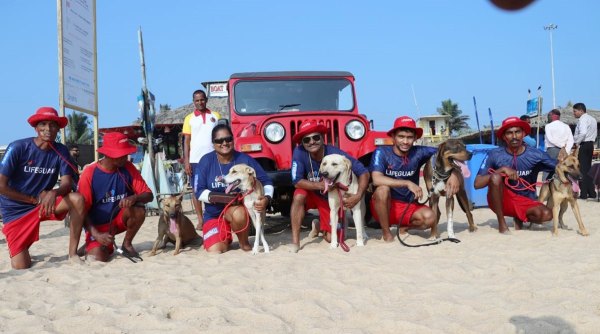 A ‘paw-squad’ of 11 adopted canine, comprising 9 Indian mongrels, a labrador and a blended breed, aged between 11 and 19 months, is being educated by Drishti Marine. (Specific picture)
A ‘paw-squad’ of 11 adopted canine, comprising 9 Indian mongrels, a labrador and a blended breed, aged between 11 and 19 months, is being educated by Drishti Marine. (Specific picture)
“Canine have a survival intuition which allows them to take the most secure route again to the shore whereas towing a sufferer, thereby decreasing the rescue effort and time,” he stated. “The canine are outfitted with a harness and rescue tube and are being educated to identify a sufferer in misery within the water, swim to the sufferer, allow him to seize the rescue tube and swim again to shore with the sufferer in tow.” He stated every canine has a devoted handler.
Moitra stated it might be one other 12 months earlier than the canine will be deployed.
Commercial
“We’re coaching them to be extra obedient to the instructions of lifeguards and in patrolling. It has been noticed that folks on the seashores are extra responsive and take directions severely when lifeguards are accompanied by a canine on a leash,” he stated.
Ashwin Ghag, sector head of the Calangute-Baga stretch and probably the most skilled lifeguards in Goa, stated the transfer will assist: “Canine have extra stamina. They may assist in recognizing somebody from a distance and decreasing response time.”
Tourism division officers stated the Coast Guard in Italy additionally trains canine for rescue operations on seashores.
AI tech
Additionally within the offing are two synthetic intelligence-based techniques – a self-driving robotic named AURUS and an AI-powered monitoring system referred to as TRITON.
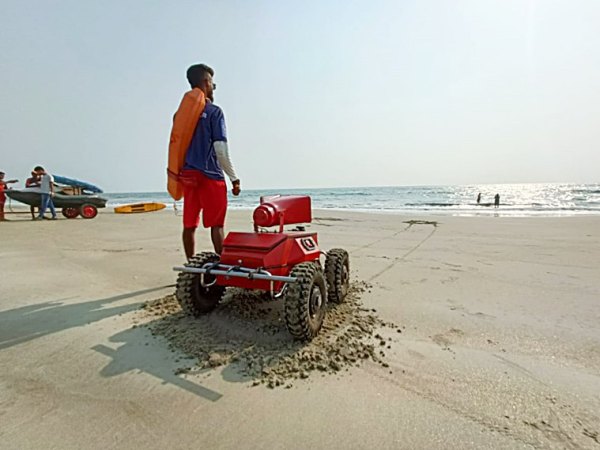 Self-driving robotic AURUS. (Specific picture)
Self-driving robotic AURUS. (Specific picture)
Geared toward rising surveillance and crowd administration, AURUS has been deployed on a pilot foundation at Miramar seashore for help when it must be closed. The robotic has been developed to help lifeguards by patrolling non-swim zones and alerting vacationers throughout excessive tide by making bulletins in a number of languages. It might probably carry a 100-kg payload and doubles up as a logistics assist car.
Commercial
“The thought is that the robotic can carry first-aid kits and plant a crimson flag on the seashore sooner or later,” stated Navin Awasthi, CEO of Drishti Marine.
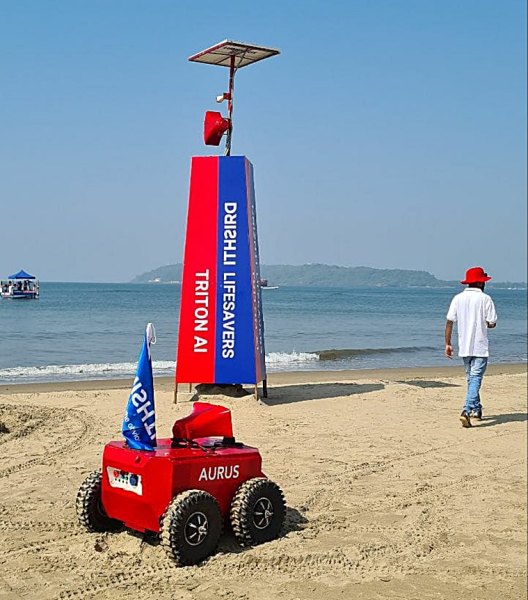 The plan is to roll out 100 TRITON and 10 AURUS items on seashores of Goa within the coming months. (Specific picture)
The plan is to roll out 100 TRITON and 10 AURUS items on seashores of Goa within the coming months. (Specific picture)
TRITON is in its testing part and has been deployed at Baina, Velsao, Benaulim, and Galgibag seashores in South Goa, and Morjim in North Goa. It’ll scan non-swim zones, determine and switch info to lifeguards, and assist them determine vacationers getting into the water throughout excessive tide and in danger-prone areas. The plan is to roll out 100 TRITON and 10 AURUS items on seashores of Goa within the coming months.
Commercial
Consciousness initiatives, ‘no-selfie’ zones
Greater than 450 lifeguards are deployed on Goa’s coast, which incorporates 39 seashores, Dudhsagar waterfalls and Mayem lake. On standard seashores similar to Baga, Calangute and Colva, a median of twenty-two lifeguards have been posted.
Lifeguards say that though authorities have put up boards with warnings to discourage guests from taking selfies on rocky areas and cliffs alongside the seashores, and have demarcated ‘no-swim zones’ by planting crimson flags, individuals nonetheless put themselves in peril. Officers stated that some influencers just lately posted a couple of new cliff leaping spot close to Dudhsagar waterfalls, driving footfall to a prohibited space and leaving vacationers susceptible to accidents.
Commercial
Amit Digambar Mahale, a lifeguard and the sector head of Querim-Mandrem space, stated the current drowning incident at Querim occurred on the rocky stretch the place a ‘no-selfie zone’ signal had been put up. “Vacationers ignore warnings and climb the rocks to take photos. Querim is a comparatively quiet seashore, nevertheless it has currently develop into well-known resulting from pictures of its picturesque pure caves arising on social media,” stated Mahale.
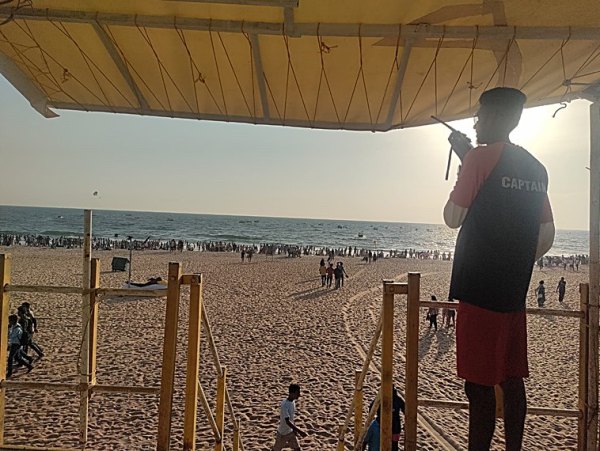 Greater than 450 lifeguards are deployed on Goa’s coast, which incorporates 39 seashores, Dudhsagar waterfalls and Mayem lake. (Specific picture)
Greater than 450 lifeguards are deployed on Goa’s coast, which incorporates 39 seashores, Dudhsagar waterfalls and Mayem lake. (Specific picture)
“When the tide modifications, the present is simply too sturdy and waves can attain a peak of over 3 metres. The ocean might seem calm, however inside seconds, an enormous wave can pull somebody in. Since rocks are slippery, it might flip deadly,” he stated.
Officers stated that from January 2022 to February 2023, seashores in North Goa accounted for the very best variety of rescues by lifeguards, with 167 rescue operations being carried out in waters off Calangute seashore, adopted by 113 rescues at Baga and 43 rescue operations at Arambol seashore. In South Goa, Palolem had probably the most rescues with 25 rescue operations, adopted by 18 rescues at Colva and 6 at Benaulim.
Ashwin Ghag, sector head of Calangute and Baga, stated vacationers typically tread into the ocean in an inebriated state.
“Drunk vacationers sit near the excessive tide line, typically at night time, when seashore security patrol is on obligation and lifeguards will not be current. It’s troublesome to identify them once they drown, since they can not increase their arms resulting from their inebriated state. Then there are individuals who swim past security zones and danger getting drowned when rip currents are sturdy,” he stated.
“Our objective is to realize zero drowning. Kisi ka bhi jaan nahi jana chahiye (nobody ought to drown). We’ve got marked areas on the seashores with flags and designated protected zones for swimming the place fewer rip currents happen. However, individuals don’t pay heed to the directions,” stated Ghag.
Officers stated an consciousness initiative – Swim with Lifesavers – which was first launched in March 2021 to create consciousness, impart training and supply tips on swimming within the sea, whereas encouraging people to be taught to respect deep blue, is being revived. The 60-minute programme gives a guided swim session and goals to create consciousness about sea security.
Adblock check (Why?)